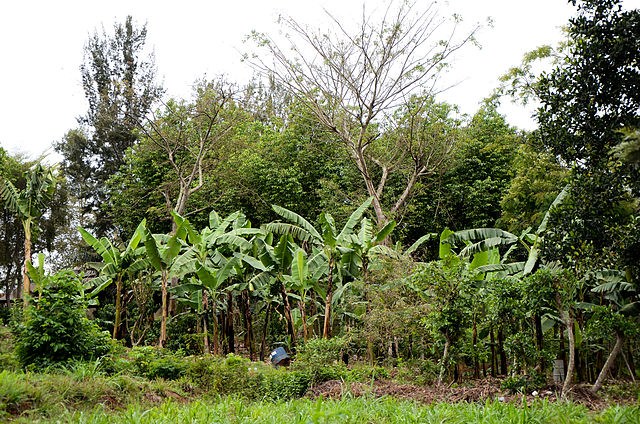Erik Hoffner is an editor for Mongabay, an environmental news service. He’s currently working on a series of articles on agroforestry.
In June, the clean energy firm Carbon Engineering announced that it had developed a technique to remove carbon dioxide from the air by turning it into fuel. The company uses massive fans to blow air onto a chemical solution that captures carbon dioxide, which then undergoes a series of chemical reactions to transform into liquid fuel. To execute this process, Carbon Engineering estimates that it will cost roughly $100 per metric ton of carbon dioxide removed, which is relatively cheap when compared to other methods.
While this is no doubt an exciting discovery, Carbon Engineering’s invention exemplifies one of the constant challenges plaguing high-tech climate change solutions: they might be cost-saving in the long run but require huge amounts of upfront investment. As environmental writer John Vidal has noted, “The Achilles’ heel of all negative emission technologies is cost.” All existing carbon removal technologies and research are expensive. The Southern Company’s carbon capturing power plant in Mississippi was forecast to cost $2.2 billion to build but is still unfinished and will now cost roughly $7.3 billion to complete.
While Carbon Engineering has not publicized how much it would cost to refine and scale its technology globally, it will likely require hundreds of billions of dollars — not to mention the massive amount of resources needed to build the enormous fans. Where will that funding come from and even more importantly, will the funding come in time?
In the quest to curb climate change, we must remember that there are low-tech methods at our disposal that can achieve similar results with much less initial investment. In fact, there is already an economical large-scale technology for removing carbon from the atmosphere: agroforestry.
Agroforestry is essentially a forest-mimicking agriculture that involves growing trees, shrubs and vegetables in tight assemblages. It is an ancient technology created by indigenous peoples and popularized in recent decades by newer landowners. Although it’s difficult to pin down how much of the world’s agricultural land contains tree cover, figures range from 100 million hectares to as much as 1 billion hectares, which lock up an estimated .75 gigatons of carbon per year. By comparison, there were 32.5 gigatons of global carbon emissions in 2017.
In terms of cost, agroforestry is likely much cheaper than Carbon Engineering’s invention, not to mention that it will likely take much more carbon-emitting energy to operate their machines on the global scale that they envision. Project Drawdown, a carbon solution tracking initiative, estimates a cost of $26.8 billion to implement agroforestry on an additional 19 million hectares globally — sequestering 9.3 billion gigatons of carbon and providing an estimated profit of $710 billion for farmers and investors by 2050. Institutions with “climate-smart” agriculture support programs like the World Bank and the UN Food and Agricultural Organization could supply some of the needed funding and channel it through the training and extension programs of nonprofits like the World Agroforestry Centre. Private investors seeking carbon credits can likely provide significant capital as well.
Agroforests not only eliminate carbon but also provide food, fiber, medicines and profit for people, as well as habitats for birds, bugs, monkeys, frogs and other species. One type of agroforest commonly found in the tropics is the “food forest,” an overgrown vegetable garden full of fruit-bearing trees and plants like cacao. They protect annual crops such as melons, grains and squash from direct sunlight, which can dry out soils and hurt yields, and they supply nitrogen for enriching the soil. Trees are also more visually attractive than the churning blades of Carbon Engineering’s massive fans.
While agroforests are most easily cultivated in the tropics, they are feasible anywhere trees grow, including across temperate regions in the United States where experiments with large-scale, hazelnut-based woody agriculture are underway. These agroforests supply edible nuts and protect nearby crops from the wind.
Another benefit of agroforestry is that it roots local agrarian communities in place, making it less likely that farmers and rural workers will migrate to cities to search for work. Local communities, and especially indigenous ones, are proven to be great stewards of their lands and generally reap good profits when they implement agroforestry techniques. In Honduras, one farmer who helped found a cooperative for growing agroforest-based organic coffee beans made enough income to send all her kids and later, her six grandkids, to school.
Unlike “end of the pipe” climate fixes such as Carbon Engineering’s, no new technology is needed to develop and scale agroforestry, with the main costs being seeds and training. On a finite planet, these are assets that can be rapidly acquired, multiplied and deployed globally, with results that are useful, empowering and beautiful.
This was produced by The WorldPost, a partnership of the Berggruen Institute and The Washington Post.





